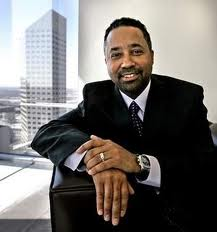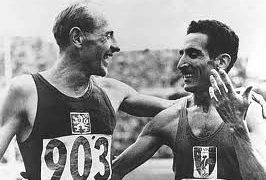Several hours ago, Max Siegel was named the new CEO for USA Track & Field. A press conference was announced an hour later, and Max spoke to assembled media. Unfortunately, we were still in London, covering the Virgin London marathon and the build up to the 2012 London marathon.
 Max Siegel, photo courtesy of USA Track & Field
Max Siegel, photo courtesy of USA Track & Field
Mark Winitz, one of our long-time writers, texted me in London, and reminded me of the story he did in February 2011 for American Track & Field on the board of USA Track & Field. We have reprinted the opening and Max Siegel’s thoughtful comments on where to take USA Track & Field. We wish him the very best and we believe you will appreciate his thoughts!
Version 2 February 24, 2011
The Future of Track and Field in America
Here’s How Six USATF Board Members See It
by Mark Winitz
What’s the future of American track and field? Is it flourishing, or dying?
According to the latest National Federation of State High School Associations survey, outdoor track and field was the number one sport among high school girls nationally in 2009-2010 with almost 470,000 participants, and the second largest for boys (572,123 participants) behind football. And outdoor track and field gained more participants in 2009-2010 than any other high school sport. On the roads, according to Running USA, in 2009 there were approximately 10 million U.S. road race finishers, a record. That sounds pretty healthy.
But many critics contend that in the last 25 years, track and field has lost its public face as a major American sport. In addition, governance at the highest levels has faced rocky territory–and plenty of criticism–over the past several years. A 2009 USOC-mandated restructuring of USA Track & Field cut USATF’s Board of Directors from 31 members to 15, leaving many of track’s diverse constituencies feeling they had no voice at the sport’s highest level.
Last September, barely two years after his hiring, Doug Logan, the track federation’s “new” CEO, was abruptly released by the Board amidst concerns that he was not performing up to the demands of the job. A new CEO should be named this Spring.
Sometimes overlooked by critics is the fact that USATF has recently made some significant strides forward:
• In February, 2009, a “Project 30” Task Force issued a 69-page report that analyzed Team USA performance in Beijing and set a course for programmatic change to maximize Team USA performance in future Olympic and World Championship competitions. USATF subsequently hired a Chief of Sports Performance and a Director of Coaching, and rolled out a new High Performance Action Plan.
• A joint USATF-Nike venture is scheduled to spend approximately $8 million dollars during its 8-year term to support athletes with medal-winning potential for the 2012 and 2016 Olympics.
• In December, 2009, USATF announced a new strategic plan, outlining its mission, vision and strategies through 2012. Although the plan has been criticized for lack of detail (such as accountability and timelines for carrying out strategic objectives and programs), USATF’s Board and the Board’s subcommittees are using it as their guide for action (you can see the plan at: www.usatf.org/about/committees/BoardOfDirectors/strategicPlan.asp
• USATF’s USA Distance Project has grown to 10 distance training centers nationwide to help develop world-class American marathoners and distance stars. More than 50% of the top 100 U.S. distance runners train at these centers.
In addition, the USA Track & Field Foundation, created in 2002 to financially support USATF programs and athletes, has become an important factor in the development of world-class athletes, annually distributing (via the generosity of a small group of passionate USATF members) almost a half a million dollars every year to important causes within our sport.
To help American Track & Field readers get to know more about USATF’s Board of Directors, we interviewed six of the 15 members–selected from a cross-section of backgrounds and experiences– and asked each to describe their personal top three priorities for USATF, and for the sport in general.
Max Siegel, USATF Board Member, Board Operations Committee Chair
Max Siegel is the CEO of The 909 Group LLC, a sports, entertainment and lifestyle marketing firm. He also practices law with Baker & Daniels in Indianapolis, with clients such as the Seattle Mariners, USA Gymnastics, USA Swimming, and NCAA. A leading NASCAR consultant, Max is the former President of Global Operations for Dale Earnhardt, Inc., a former executive with the Sony BMG/ Zomba Label Group, and a cum laude graduate of the University of Notre Dame School of Law.
Siegel’s Comments
Priority A: Position the brand and the sport to create value and attract commercial targets. Creating value isn’t just about marketing and visibility. It’s really about return on an investment. One thing we’ve been doing is an assessment of our assets and coming up with campaigns that resonate with audiences. Track is a diverse sport. You can hit the health care sector, the female/minority demographic, etc. There are so many constituencies that are part of my idea of how we present the brand. In addition, track and field is a lifestyle sport. It’s an international brand that is integrated in our lifestyle. It doesn’t matter if you’re an elite athlete, a race walker, or a youngster. Everything that you do has a health benefit and everyone can participate in it. So, I’m passionate about making sure that USATF develops grass-roots programs that resonate in communities, and that we develop media properties so sponsors can get returns by being involved.
Besides doing this type of type of programming, USATF also needs to closely look at how it presents competitions on TV. Today’s economy dictates that programming be directed at the grassroots devotees. This is the kind of programming that makes sense to appropriate commercial sponsors because it has the potential for a large viewer audience. Much of what I do with NASCAR relates to youth education–science, math, technology, and engineering as it relates to race cars. We also have a fitness program. These are the kinds of things that corporations and government agencies can get behind while adding value to their brand, and sending a message to the community.
Priority B: Increase USATF’s available resources by bringing in new commercial partners and sponsors. But we need to do the first piece (position the brand) right before we can do this one. Human resources, program partners, and financial resources are all critically important. Part of my goal for the Board’s Operations Committee is that we have the necessary resources in place to execute our business objectives in our strategic plan.
Priority C: Improve our service to the sport’s constituency base. Galvanize this base, set some obtainable goals, and figure out what i
s needed to achieve them. At the grassroots level, whether it’s masters or youth, we need to hear what the constituents want to accomplish. This constituent base needs to be unified in voicing the goals they want to achieve. In the end, the ability to achieve these goals will come down to financial resources and the manpower to execute them. If you have fragmented grass-roots programs that aren’t tied into a broad, well-defined return on investment, it becomes even harder to secure financial resources.
MARK WINITZ is a longtime writer for AMERICAN TRACK & FIELD. He sits on USATF’s national Men’s Long Distance Running Executive Committee and Law & Legislation Committee. He also sits on Pacific Association/USATF’s Board of Athletics and is a Certified USATF Master Level Official/Referee.
RelatedPosts
Author

Larry Eder has had a 52-year involvement in the sport of athletics. Larry has experienced the sport as an athlete, coach, magazine publisher, and now, journalist and blogger. His first article, on Don Bowden, America's first sub-4 minute miler, was published in RW in 1983. Larry has published several magazines on athletics, from American Athletics to the U.S. version of Spikes magazine. He currently manages the content and marketing development of the RunningNetwork, The Shoe Addicts, and RunBlogRun. Of RunBlogRun, his daily pilgrimage with the sport, Larry says: "I have to admit, I love traveling to far away meets, writing about the sport I love, and the athletes I respect, for my readers at runblogrun.com, the most of anything I have ever done, except, maybe running itself." Also does some updates for BBC Sports at key events, which he truly enjoys. Theme song: Greg Allman, " I'm no Angel."
View all posts




















